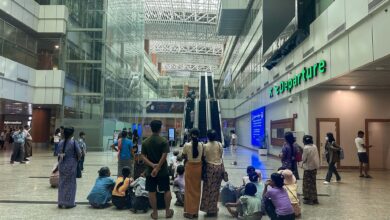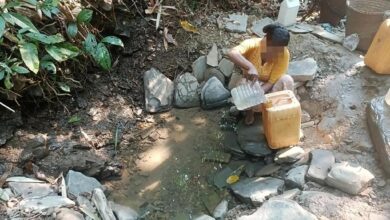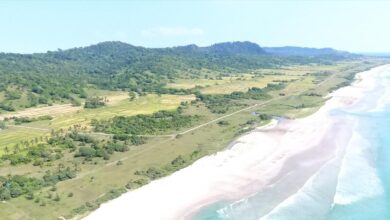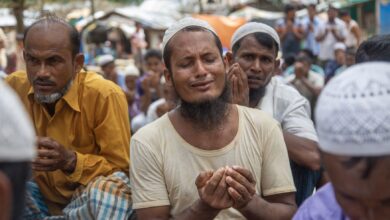
Warning: This report contains disturbing images
On the morning of Christmas Eve, a month after his marriage to his 27-year-old wife Julia, Ko Peter*, 34, left his home in the Kayah State capital Loikaw for a short trip.
Driving a rented white Honda CR-V, he set out at around 6:30am for a village in Hpruso Township where his father was sheltering after recent clashes. He was planning to bring his father, who had had a stroke, back to Loikaw for medical treatment.
At 9:21am, Julia called Ko Peter after hearing reports of shelling by regime soldiers near Bardo, a village just outside of Loikaw.
It wasn’t until Ko Peter answered and assured her that the roads were safe to travel that she calmed down. He said he was near Moso, a village in Hpruso Township about 25 miles from Loikaw, and told her not to worry. They had been together for eight years—four as friends and four as lovers—so she did her best to put her mind at ease.
It had been nearly a year since the people of Kayah State began their uprising against Myanmar’s brutal military junta, and there were almost daily reports of civilian deaths at the hands of regime troops.
Unable to banish the thought that her husband could become the next victim, she called again half an hour later. This time, however, there was no answer. She tried not to worry. But when she called again at 11:32am and discovered that Ko Peter’s phone had been switched off, she panicked. She called 14 more times, but still couldn’t get through.
That evening, as she was looking for news, she saw that the Karenni Nationalities Defence Force (KNDF), one of the anti-regime resistance groups active in the area, had published news on its Facebook page that junta soldiers had set several vehicles ablaze near Moso.
Photos of the scene showed a vehicle that looked very similar to the one her husband was driving that morning. The owner later confirmed that the licence plate matched that of the white Honda CR-V he had rented to Ko Peter.

That was all she could find out for the time being. The KNDF said that it could not provide any further information or search for possible victims because the vehicles were still burning.
The next morning, however, the full horror of what had happened the day before became apparent. A total of 15 vehicles, including five trucks, two passenger cars, two tractors, and six motorcycles, had been set on fire just outside of Moso. And there were dead bodies among them.

At this point, Julia was still hopeful that Peter had somehow been spared. Believing that he might have escaped and found a safe place to hide, she called his phone repeatedly throughout the day. But it wasn’t until the next day that someone finally picked up the phone.
“Whoever it was just listened without saying a word. After a while I just hung up. They wanted to keep me waiting. I was hopeful, but at the same time, I was on the verge of going crazy,” she said.
When Ko Peter’s sister sent a message to his phone, she received a reply that it had been picked up at the scene of the incident. Attempts to get more information went unanswered.
Julia never heard back from her husband. As unlikely as it was, she clung to the hope that he was still alive. She just couldn’t believe that he had died such a horrific death on Christmas Eve.
Lost contact
Photos published by the KNDF the day after the massacre showed burnt corpses both inside the vehicles and in the surrounding area. The remains were in such bad condition that it was impossible to say how many people had been killed.
Ten days later, the Karenni State Police (KSP), a network of police officers taking part in the Civil Disobedience Movement (CDM), announced at an online press conference that autopsies had been carried out on 31 bodies—26 male and five female. In addition to this, they also had three large plastic bags filled with human remains that had been reduced to ash.
It has been all but impossible to positively identify any of the victims. The families have been left to guess the fate of their loved ones based on the scant evidence available to them.


One likely victim was a forest ranger named Khue Li Reh, an employee of Hpruso Township’s forestry department whose motorcycle was among those that had been set on fire.
Khue Li Reh’s sister said she called his cell phone repeatedly. The calls were answered a few times, but each time the person on the other end just said, “What?” before hanging up, she said.
Myanmar Now called Khue Li Reh’s cell phone number on December 26 and was answered by a man who said he was in Yangon. When asked for his name, the man hung up. The number has been unreachable since then.
Khue Li Reh’s sister confirmed that the man, who spoke in a clear Burmese accent, was not her brother.
Relatives of two other suspected victims have recounted similar experiences. In each case, they said they lost contact sometime around 10am on December 24.
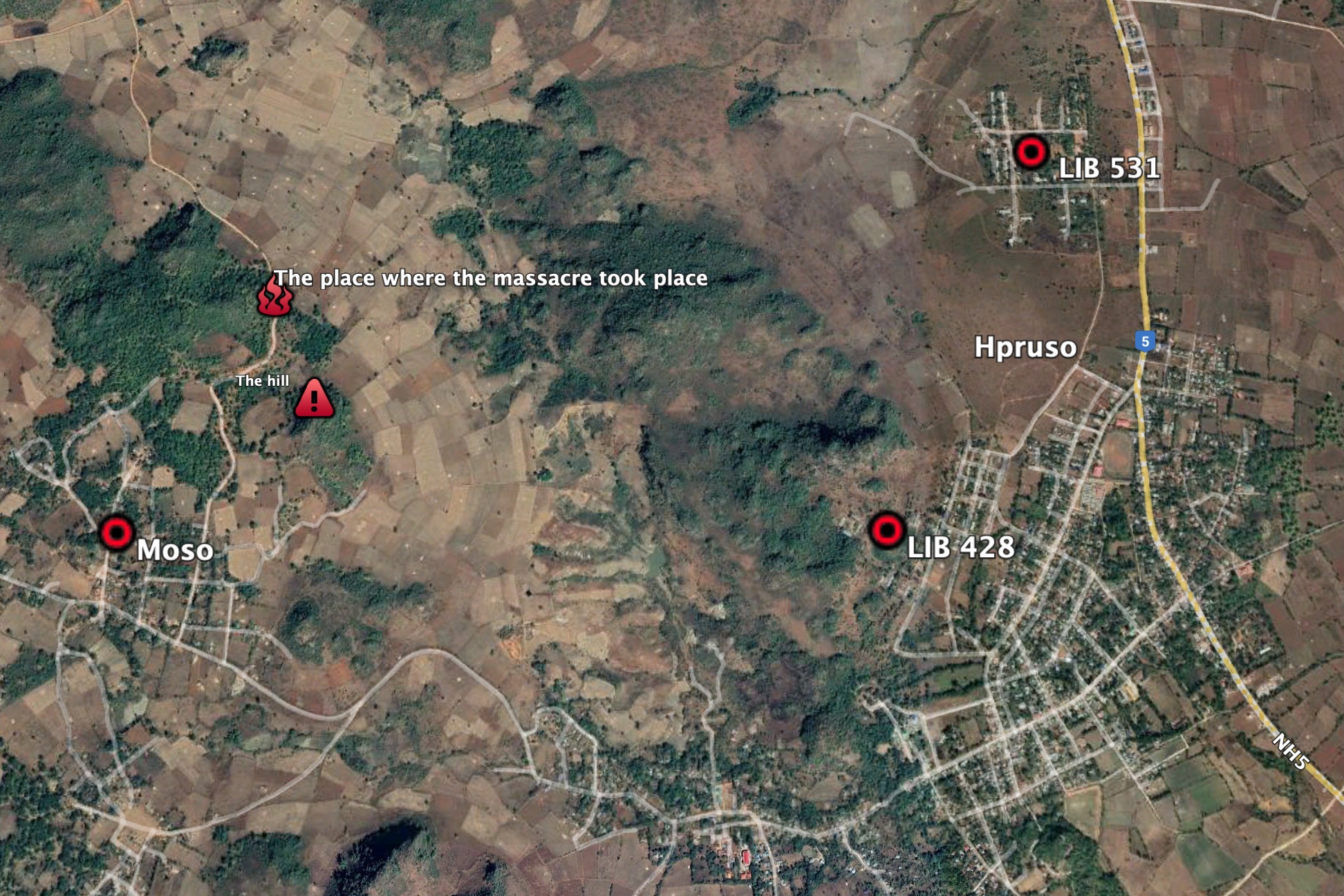
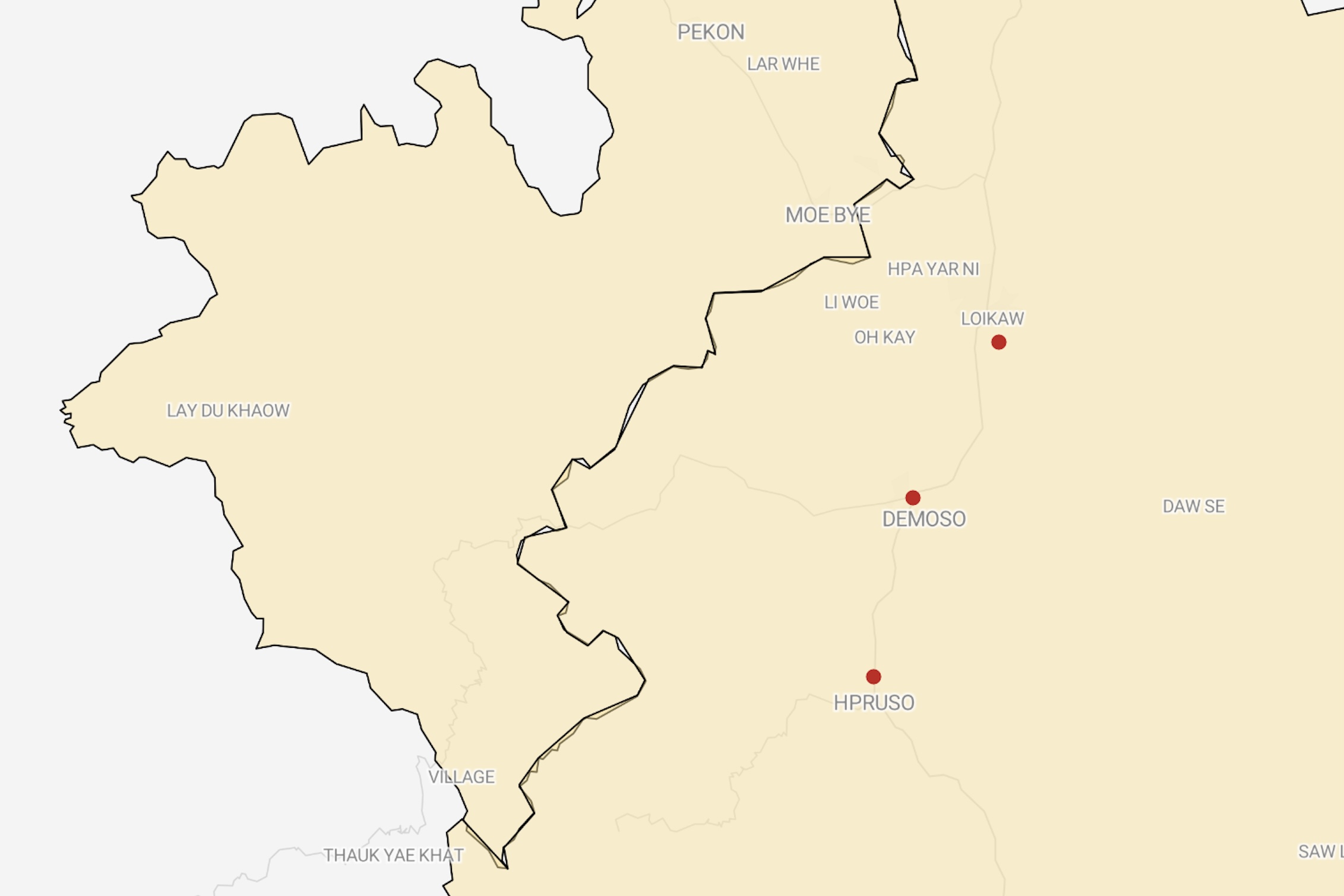
A narrow escape
Thae Mar* woke up to the sound of drones flying above her home at around 2am on December 24. She didn’t give it much thought, however, as it was something she often heard these days.
She went back to sleep, but at around 3am she heard the sound again. It was even louder this time, so she decided to go outside to have a look.
“I saw five drones hanging in the air above a road where military troops sometimes marched. I could see the flickering lights of the drones,” she said.
This made her think that there were soldiers somewhere near the village. But it wasn’t until around 9am that morning that her suspicions were confirmed.
That’s when she heard that a man named Paul* who was driving to the market with his two nieces had run into some troops near Maedaw-gu, a sacred site (the name means “Holy Mother Prayer Cave”) about a five-minute drive from Moso.
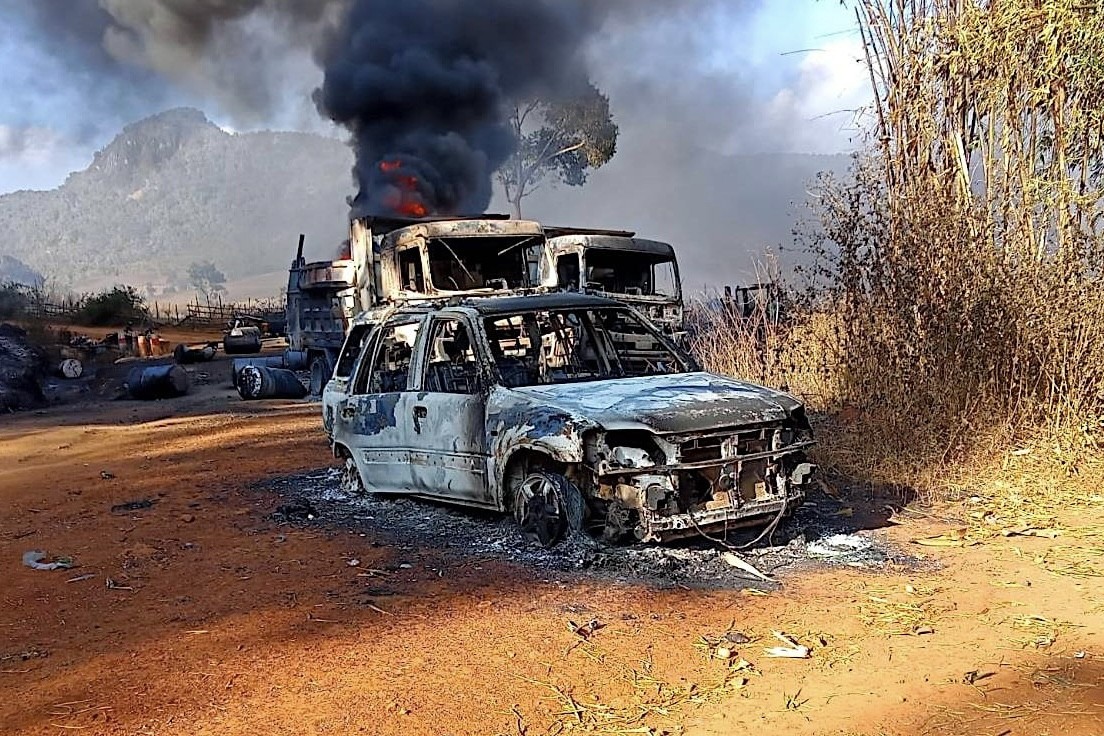
Paul was from another village called San Pya 6-Mile and was taking refuge in Moso. When a soldier shouted at him to stop from around 100 yards away, he realised that the troops weren’t members of a local People’s Defence Force (PDF), so he turned his car around and drove away.
After he returned to Moso, he told residents what he saw, and they immediately began preparing to flee to nearby hills and villages, said Thae Mar, who left the village at about 10am.
As she was making her way to a safe place, she heard the sound of explosions and artillery fire. She couldn’t tell where the sounds were coming from, but later, when a young man who said he witnessed the explosions told her what he saw, she was sure that something terrible had happened.
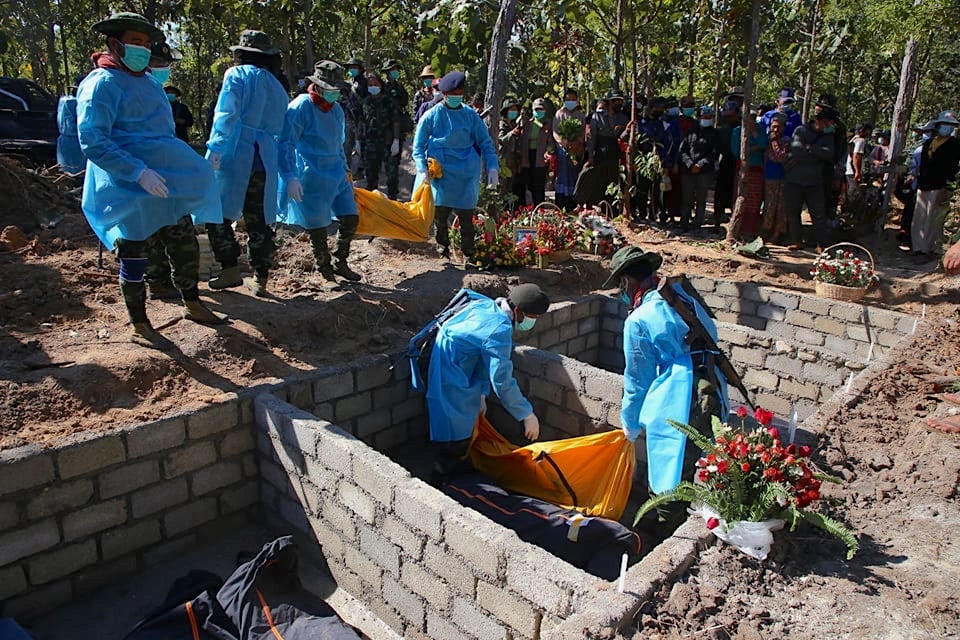
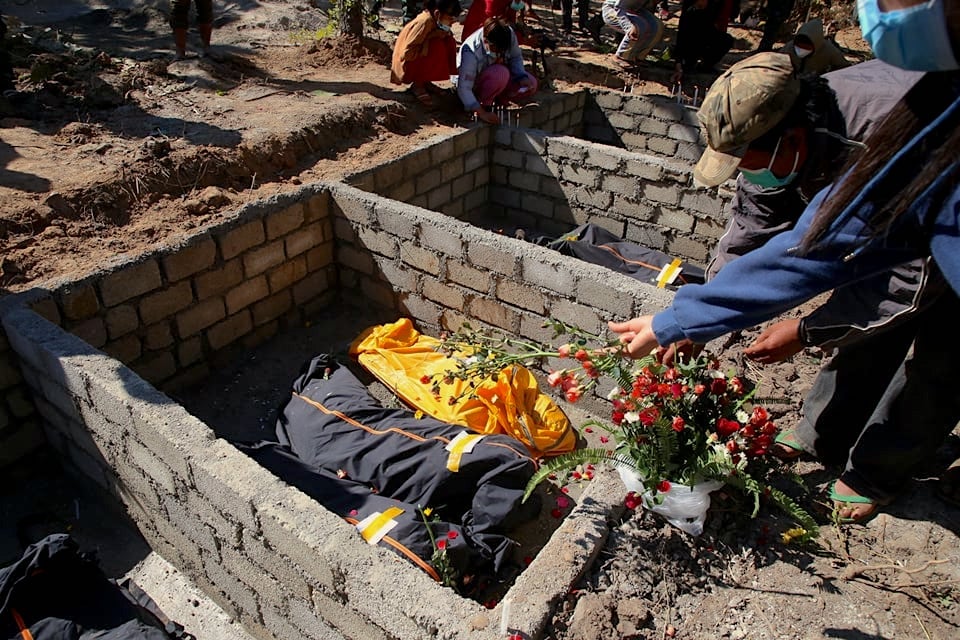
Witnesses on a hill
From a hiding place on a hill, the young man said he could clearly see everything down below on the road that connects Moso to the village of Koi Ngan.
At around 10am, he said, he saw a black car and two motorcycles stop near the spot where Paul and his nieces had encountered the soldiers.
“The soldiers shouted at the driver of the car to stop. They then asked him something, but I don’t think he answered. That’s when the soldiers started shouting and fired a warning shot,” the young man told Thae Mar.
At the same time this was happening, the young man noticed some other vehicles enter a blind spot behind some bamboo. He didn’t see them come out again, he said.
The young man told Thae Mar that it was soon after this that the first explosion went off. But he fled before he could see the smoke rise, he added.
Myanmar Now was unable to contact the young man directly because he had gone into hiding in another area. However, we did speak to another witness who described the scene in greater detail.
Joseph* was with a few friends on a hill about 250 yards from where the incident occurred. When they reached the top of the hill shortly before 10am, he looked down and saw many vehicles gathered together in an open area. However, he couldn’t see exactly what was happening there, he said.
About 15 minutes later, they heard a loud explosion. Then black smoke started billowing into the air from an area that was partly obscured by a bamboo grove.
“It was really loud. Gas cans were flying into the air. I saw two or three that were blasted away. The fire burned for a long time. It lasted late into the night,” he said.
At this point, Joseph and his friends assumed that only the vehicles had been set ablaze. They knew the drivers and passengers had to be somewhere, and were at great risk if they were in the custody of the soldiers. But they could not have imagined that anybody was inside that inferno. It seemed too cruel, even for a regime that has shown no compunction about killing civilians.
Just before the explosion, four men on motorbikes arrived at the scene. According to Joseph, they were members of a Border Guard Force (BGF) camped near Moso. (In 2009, the Karenni National People’s Liberation Front, a group allied to Myanmar’s then ruling junta, formed into a BGF under the military’s command.)
The four BGF members parked their motorbikes and walked towards the area behind the bamboo grove. A few minutes later, Joseph and the others heard gunshots. The BGF members did not emerge again.
Not long after this, the soldiers—there were around 100 of them, according to Joseph—started marching in the direction of Hpruso, about an hour away on foot. Troops from Light Infantry Battalion (LIB) 531 were stationed near the entrance to the town.
Joseph and the others didn’t come down from the hill until around 2pm, when they decided to have a closer look at the area where the soldiers had been.
“We went to check the scene after the soldiers left. The fire was still burning, and it was huge, so we didn’t dare get too close. When we saw how big it was, we just stood back and watched. We didn’t know there were people burning inside,” he said, adding that he also saw others standing a safe distance away, filming the blaze on their phones.
About 50 yards away, they found the bodies of the four BGF members. They were lying in a sandpit with their hands tied behind their backs and bullet wounds in their heads.
“Their faces were bloody and bruised. There was a pool of blood on the ground. It looked like the junta soldiers struck them with the butts of their rifles before killing them. A couple of them had their teeth smashed in, and the skull of one was split open,” Joseph said.
Joseph later learned that the four BGF members had come to negotiate for the release of whoever had been in the vehicles, assuming that they had merely been detained by the soldiers.

Beyond recognition
The next morning, after the fire had finally died down, the villagers returned to survey the damage. They were horrified to discover not only the burned-out shells of more than a dozen vehicles, but also human remains, charred beyond recognition.
It took a while to get a sense of the scale of the atrocity that had been committed. The more they looked, the more bodies they found. Some were inside the vehicles, while others were on the ground. There were scraps of baby clothing, suggesting that some of the victims were mere infants, but their bodies had presumably been reduced to ashes.
Joseph soon learned that one of his uncles was among those who died in the flames ignited by the junta soldiers. He had left his machete behind at his farm and was going back to retrieve it when he encountered his killers.
“I feel such pain inside. I have never experienced anything like this in my life. I feel outraged, because some of the victims were my fellow villagers,” he said.
It would be two more days before local residents and members of the resistance could recover the bodies, as regime soldiers continued to shell the area. Finally, on December 27, they hastily collected all the remains they could find. The entire operation took just 30 minutes, according to KSP captain Bo Bo, the deputy police chief for Karenni State.
This was followed by a series of autopsies performed by two CDM doctors to determine as much as possible about the 31 bodies that remained at least partially intact. They discovered, for instance, that one of the five female victims was a girl between the ages of 10 and 15.
I feel such pain inside. I have never experienced anything like this in my life
While it was impossible to know anything with certainty about the other bodies—the ones that were little more than ashes and bone fragments that had to be collected in bags—those that had not been completely incinerated showed damning evidence of mistreatment.
Some were gagged and had their hands tied behind their backs, according to one of the doctors who performed the autopsies; some had shattered skulls and stab wounds in their chests.
“We can imagine how much pain they must have been in before they died just by looking at the evidence,” he said, sobbing at the press conference as he showed photographs of the remains he examined.
The official story
In a rare departure from its standard practice of ignoring accusations of atrocities committed by its troops, the junta wasted no time giving its own version of what happened near Moso on the morning of December 24.
That evening, before even residents of the area were fully aware of the situation, state-run media reported that a gunfight had broken out on the Moso-Koi Ngan road between regime forces and the occupants of seven vehicles that failed to stop as ordered at a security checkpoint. This resulted in all of the vehicles bursting into flames, the reports claimed.
“Seven suspicious vehicles, driving from Koi Ngan towards Moso, were asked to stop for security checks at about 10am, but the drivers did not stop the vehicles,” according to a statement released by the regime, which blamed the incident on “terrorists” from the PDF and the Karenni Army, the armed wing of the Karenni National Progressive Party, who allegedly threw bombs during the exchange of fire.
This initial statement asserts that all of the suspects were shot dead, but doesn’t mention the number of casualties. It also says that weapons, rations, military uniforms and fuel were found in the vehicles of those who had been killed.
Locals who saw the aftermath of the carnage noted that the actual number of vehicles that had been engulfed in flames was double that mentioned in the official account. The doctors who carried out the post-mortem examinations also found the regime’s claims to be inconsistent with the evidence.
It was absurd, they said, to suggest that the victims had engaged in a gunfight when a number of them had their hands tied behind their backs.
“They killed innocent civilians and burned the bodies to destroy the evidence of their crime,” said one doctor, bluntly contradicting the regime’s version of events.
On December 27, the junta’s spokesperson, Brig-Gen Zaw Min Tun, doubled down on the official story.
“A group of about 20 gunmen fired on the security forces from the southwestern side. They even attacked us with an RPG. During the fighting, some vehicles caught fire and some people were shot dead. A total of 25 bodies were found there, 24 men and one woman. They all seem to be between 20 and 40 years of age,” he told RFA.
A day later, however, international aid group Save the Children confirmed that two of its staffers were among those who died in the conflagration, belying the regime’s insistence that the victims were all enemy combatants.
Another tell-tale detail that effectively demolishes the junta’s narrative is the fact that none of the vehicles were being driven when they went up in flames.
“If they shot at the fuel trucks for driving away, the occupants should have burnt and died inside the trucks. But we saw no charred bodies in the front seats of any vehicles. Most were piled up on the light truck,” said KSP captain Bo Bo.
The fuel trucks he was referring to were three vehicles owned by a petrol station in Loikaw. The wife of the owner of the petrol station confirmed that her husband and seven employees had gone missing.
The light truck, meanwhile, belonged to four young people—three men and one woman—who were moving to Loikaw to escape from recent clashes. Family members confirmed that all four had disappeared and were presumed dead after the truck and a tractor they were driving were found among the charred vehicles.
The three fuel trucks were found parked neatly beside the light truck, tractor, and a Mitsubishi Canter truck, said Bo Bo, showing photographs of the scene that offered further evidence that the clash described by the regime was a fiction.

Seeking justice
Three days after the massacre, the KSP announced plans to compile a list of people reported missing in and around Moso as part of the effort to identify victims and get a better idea of how many were killed.
Within a week, it received reports of 42 people who had disappeared at around the time of the incident. Of these, only two were women. Since at least five of the victims were known to be female, this suggested that the number of people who died in the fire could have been even higher than 42.
According to Bo Bo, the KSP captain, the total—including the four BGF members—may have been as high as 49.
(The regime also had its own account of what happened to the BGF members, too: “During the fighting, some PDFs sought help from the BGF camp. Four BGF [sic] in civilian suits followed them. Then, they were killed [with] hands tied behind their back. When they left the camp, they wore civilian suits. When their dead bodies were found, they wore BGF uniforms. It was an attempt to instigate between BGF and the Tatmadaw,” a junta mouthpiece reported.)
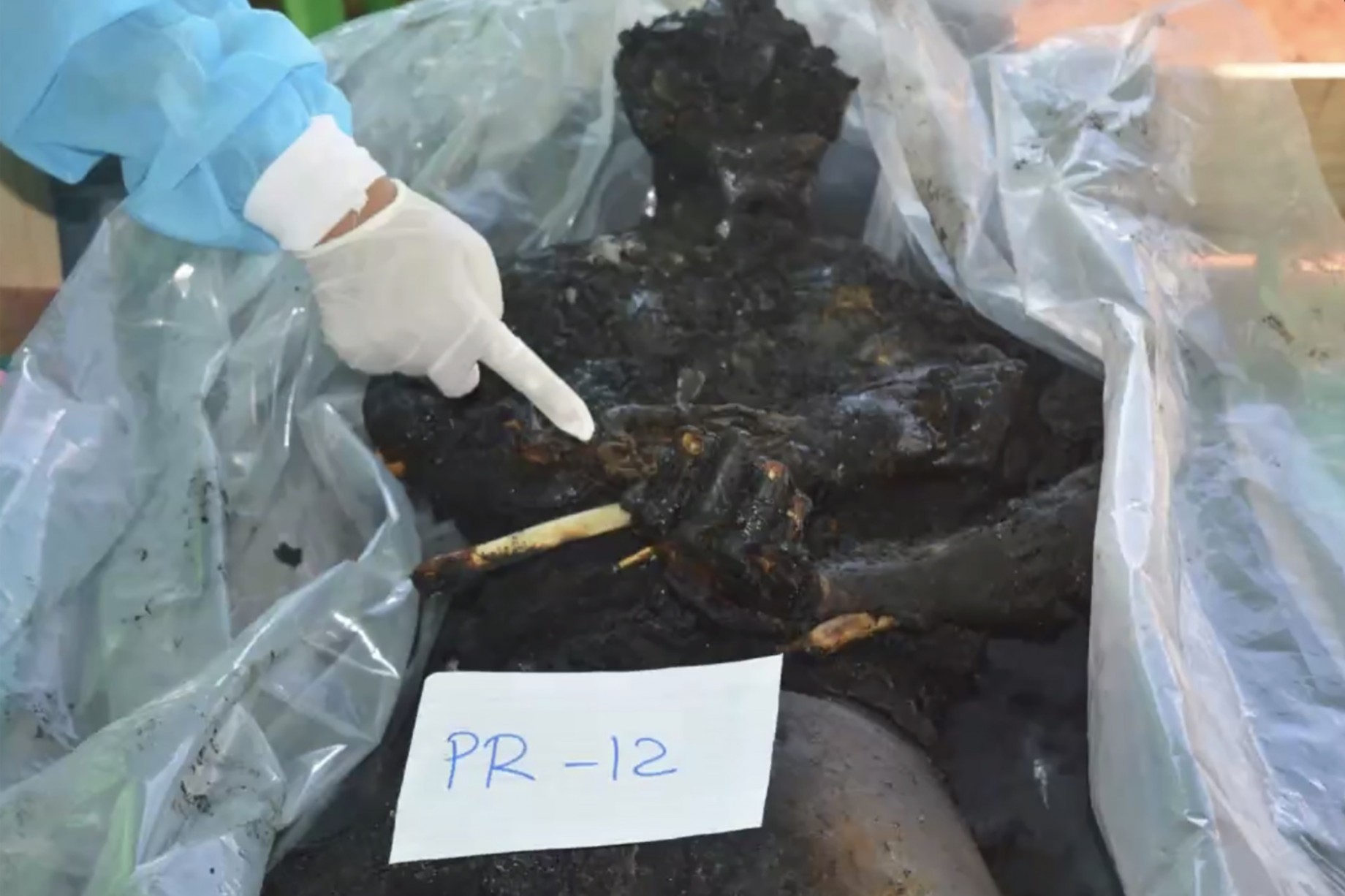
Meanwhile, the shadow National Unity Government (NUG) has said it will send all available evidence related to the massacre to the United Nations’ Independent Investigative Mechanism for Myanmar (IIMM) and also file a lawsuit at the International Criminal Court (ICC).
“The IIMM will handle the findings regarding the dead bodies, and the NUG will join forces to bring about justice,” said the NUG’s minister for human rights, Aung Myo Min.
Martin Griffiths, the UN’s under-secretary-general for humanitarian affairs, has also urged an investigation into the incident. The United Nations Security Council and some countries had denounced the inhumane acts of the military.
According to a statement released by the United States mission to the United Nations on December 29, “The members of the Security Council condemned the reported killing of at least 35 people, including four children and two staff of Save the Children, in Kayah State on 24 December. They stressed the need to ensure accountability for this act.”
UNICEF, the United Nations International Children’s Emergency Fund, also released a statement condemning the attack.
“Credible reports suggest that four children were killed in the attack, including two 17-year-old boys, a teenage girl and a child of approximately 5-6 years of age, of indeterminate gender,” it said, calling for “urgent action to investigate this deplorable incident and to hold those responsible to account.”
Julia, the wife of Ko Peter, said that she still could not accept the reality of what happened to her husband. A devout Christian, she continued to wait for 10 days after the Christmas Eve massacre for some word from him.
“I pray that whose lives were sacrificed will have their wishes fulfilled. I am not praying for just one victim. I feel heartbroken for all the victims who died,” she said.
She said that Ko Peter also had a wish: to see the overthrow of Myanmar’s military dictatorship once and for all. She urged the country’s people to work towards that goal.
“I don’t need to wish for bad things to happen to the people who did this. I know that God will punish them,” she said.
(*Names were changed for security reasons.)
